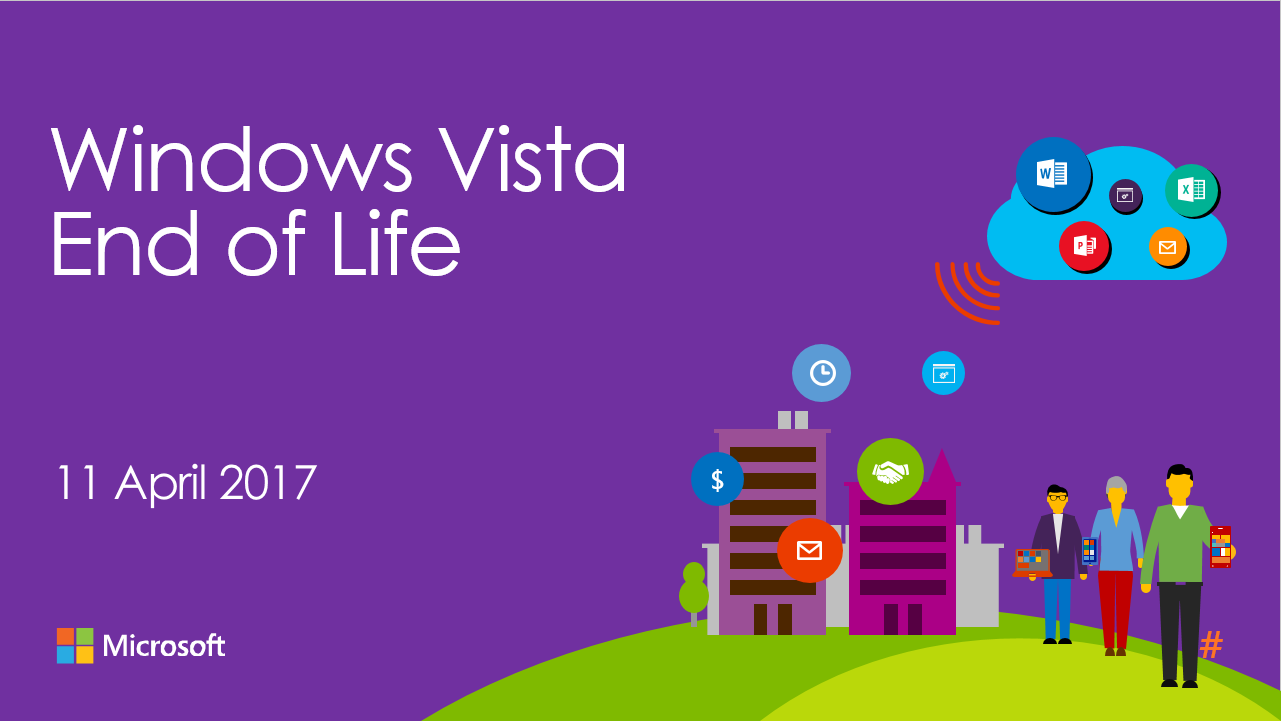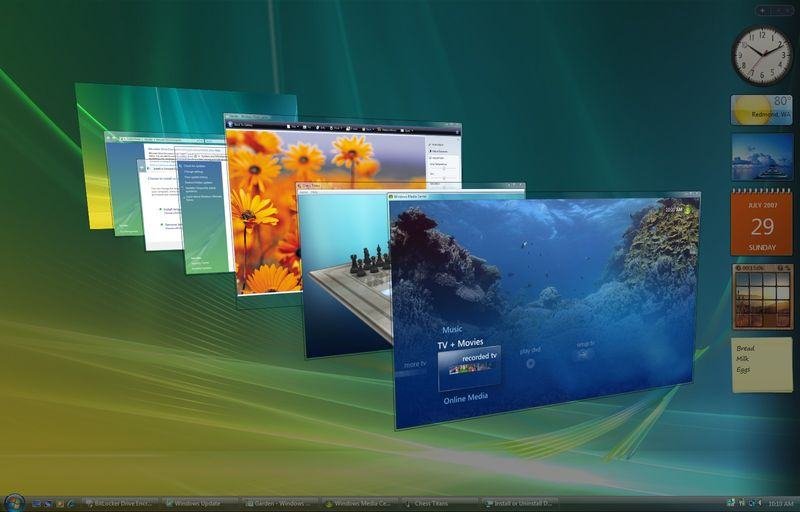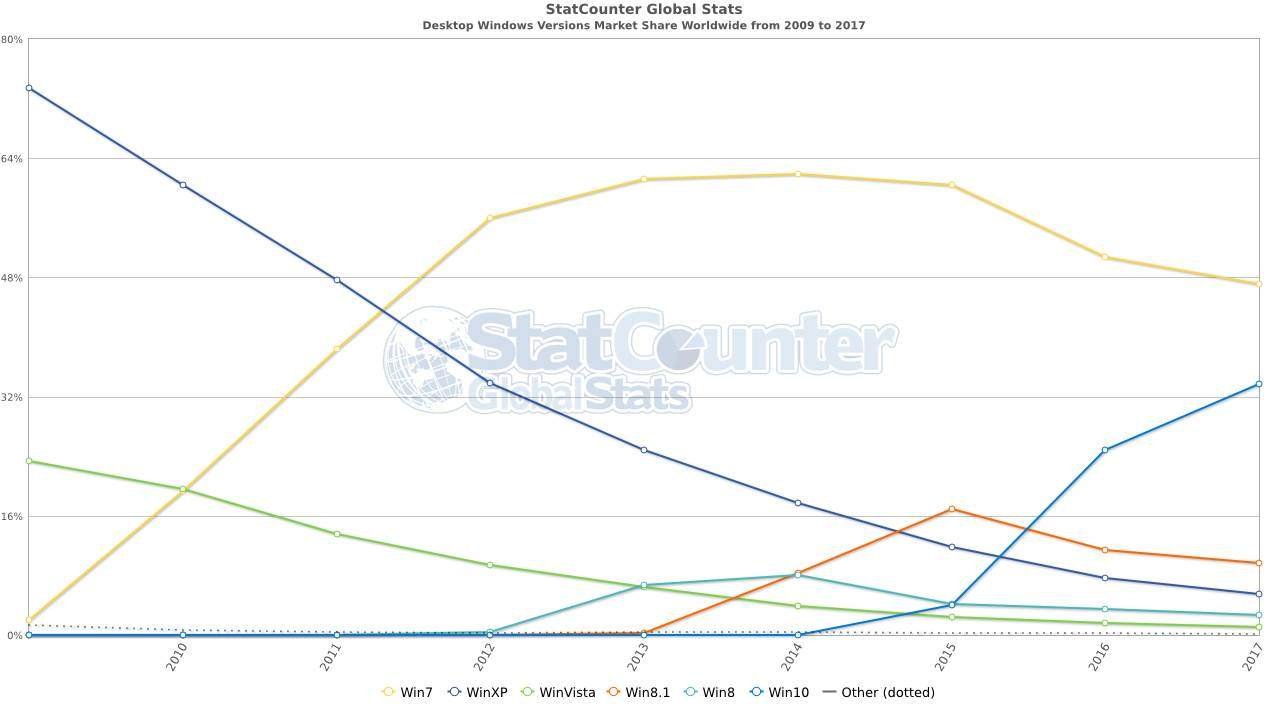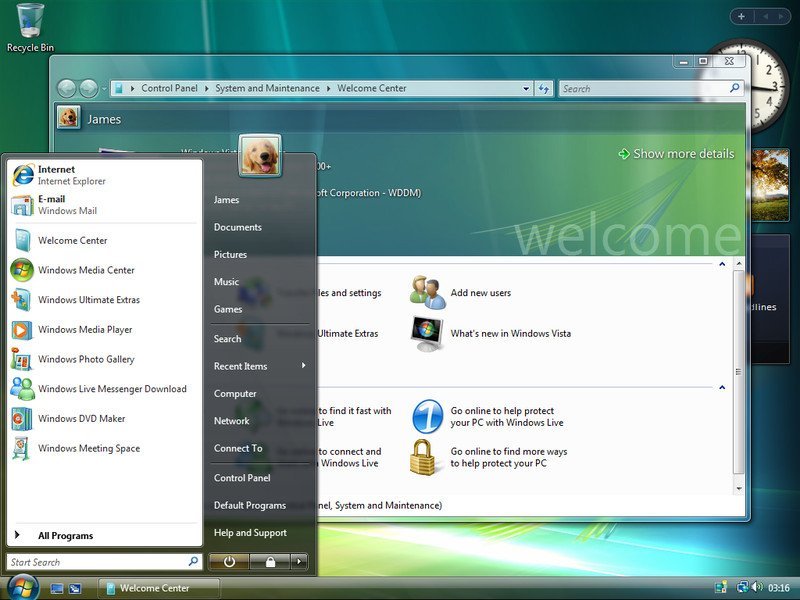
The operating system Windows Vista was once marketed by Microsoft Corporation as the most advanced OS. True, it was never able to become popular, the increase in the market share of Windows Vista, mainly, was due to the efforts of Microsoft itself, which tried its best to “pull out” its project. But Vista did not manage to occupy any significant place in the desktop operating system market.
Well, yesterday, April 11, Microsoft completed technical support for the OS, 10 years after its appearance. For the company, the creation of this operating system was significant, initially it was planned to add a lot of new products, including Windows Future Storage (WinFS). But some time after starting work on the Longhorn project (it was this code name that OS got), it became clear that some innovations would have to be abandoned. One of the first such “refusen” novelties was just WinFS.
Representatives of Microsoft, talking about a completely new file system, said that this should be the semblance of a huge database on which you can quickly search for information without any problems. The physical structure of the files on the NTFS level does not undergo any changes. But the essence of the so-called model of structured data. This hides a mechanism that constantly processes (administrates and structures) digital elements or entities. The file system was decided to stop developing in 2006, but the project’s achievements were continued in SQL Server.
Another notable innovation that was included in the list of features of the final product is the Windows Aero (Aero Glass) interface. It required a solid computer configuration, but it was really something new. In the interface there were widgets, the start menu was changed, and many changes were to the liking of users. In addition, Windows Vista has the ability to display the contents of windows when switching between tasks. It looked impressive, but in reality it was rarely used.
It should be noted that almost every new OS from Microsoft has been subjected to a large-scale criticism. But in a number of cases this criticism was caused by unusual changes that have become convenient tools over time. The same Windows XP was immediately criticized by many, but this OS exists and occupies a solid market share so far, despite the termination of support and attempts by Microsoft to change anything. But Windows Vista was scolded as soon as it appeared, and after a few months and years after that moment. The main object for criticism is the high demands on resources and their rapid exhaustion even on sufficiently productive systems, especially laptops.

Besides, a number of novelties of the interface worked not so well, it concerned both weak PCs and powerful ones, whose capabilities should be quite sufficient for all elements of the interface and services of the new operating system System. Initially, Vista installed on their systems, even manufacturers of netbooks. But it immediately became clear that such computers do not “pull” the new OS, so their developers quickly switched to XP.
A new OS was criticized for supporting DRM’s Blu-ray protection system. In a general sense, DRM is a technical means of copyright protection, software or firmware that intentionally restricts or hampers various actions with data in electronic form (copying, modification, viewing, etc.) or allow tracking such actions.
Perhaps now this would be paid less attention, as rightholders over the years have come up with a number of new protective measures that help protect licensed products from “pirates”. But then users did not understand why it is impossible to take full advantage of the purchased disk. In addition, while working with Vista, I issued a large number of UAC (User Account Control) requests, which was annoying. In the end, the company even had to make additional adjustments to the UAC system. UAC itself even became the cause of ridicule on the part of Apple.
Microsoft was trying to protect Vista. For example, an interesting experiment was conducted, during which users were first asked about what they think of Vista (the opinion, basically, was formed against the background of the opinion heard somewhere). And then the same system was demonstrated to the same users.
As a result, many rated it higher than at the very beginning of the survey. But nothing helped. Complaints continued, millions of users returned to XP or simply did not update. Therefore, the corporation decided to start work on a new system, which soon appeared, having received the name Windows 7. Then came the “eight” and, finally, the “ten”. As you know, Microsoft is promoting the latest version of its OS very actively, as Geektimes has repeatedly written about.
There are many reasons for failure. For example, the corporation then experienced problems – both with management, and with the conformity of their projects to the spirit of the times. On the promotion of Vista, huge funds were spent, large-scale marketing campaigns were conducted. But nothing helped. Money wasted.
At the time of the end of support for Vista, according to NetMarketShare, only 0.7% of the market belongs. About the same picture shows StatCounter.

But XR, whose support has long ceased, still takes about 7% of the desktop OS market. Windows 7 has about the same share. So Vista, we can assume, has long since left the market. Now only the final stage of the life cycle of this OS. Goodbye, Windows Vista.









